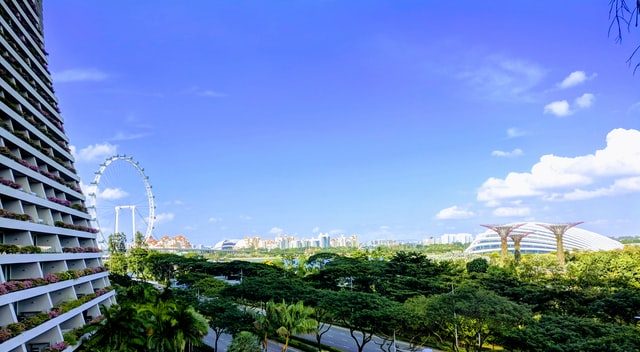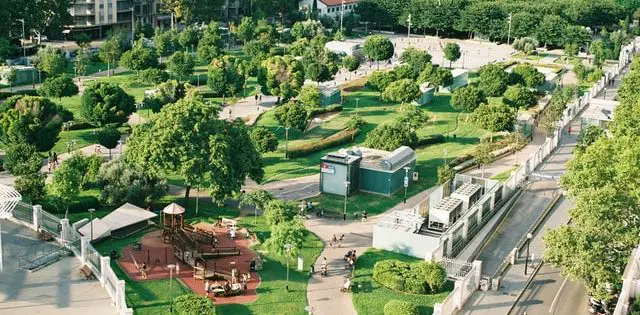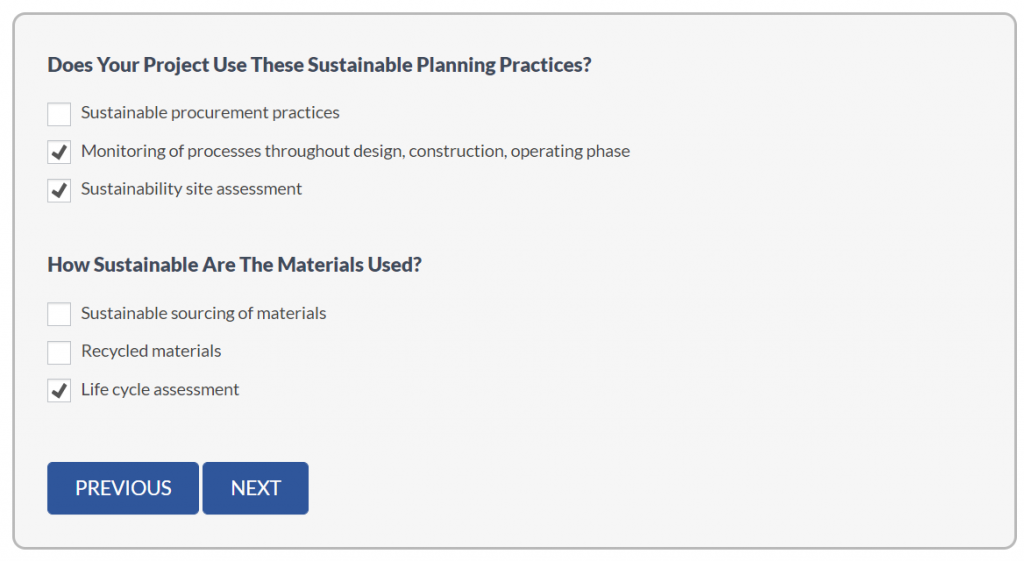There has been a growing trend towards green city developments in recent times, but many people remain unsure regarding the pros and cons of green urban solutions. Indeed, it can often seem hard to keep track of things in our busy and hectic modern world. This is also due to the rapid change that many cities undergo as they develop. These often include socio-economic factors, spatial changes, environmental changes, and cultural changes.
With this in mind, many modern cities are now taking a backseat on their progression. With this goal in mind, various frameworks and scoring systems help assess how green a city may be and highlight key indicators for that specific city to change and develop so it can become greener. This may be through the use of technology, or a change in the overall design of the city.
What is a Green City?
Many people assume a green city is solely one which focuses on environmental sustainability. However, in reality, the definition is a little more complex than that – which can make the green city pros and cons a little harder to define, too.
A green city, or a sustainable city, is technically defined as a city which is designed with social, economic, and environmental impacts in mind, all in balance with one another. Hence, the overarching concept remains that the city fits the population’s needs while also allowing room for development without compromising the needs of future generations, thereby making it sustainable.
Sustainability and reducing carbon footprints can be tricky in urban environments due to the transport links, heavy traffic, high-rise buildings and population density, and the sheer number of businesses that need to operate each day. With this in mind, in 2015, the UN set out a range of sustainable development goals (SDGs).
One such goal is for sustainability by both achieving social sustainability (maintaining or improving the wellbeing of people and future generations), economic sustainability (practices that support economic growth without negatively impacting social or environmental aspects), and environmental sustainability or “green” status by ensuring that the environment is looked after by reducing waste and increasing biodiversity. Green cities are typically considered those that tackle all of these issues but, in particular, with a specific focus on environmental concerns.
Calculate Your Building’s Sustainable Performance. Find out how your properties would score when taking the LEED or BREEAM certification.
Click Here
Green City Pros and Cons
Pros
- Reduced emissions and pollution
- Increases resident happiness and community engagement
- Drives innovation and technology changes
- Increased tourism
- Increases biodiversity in inner-city wildlife
- Cleaner air and cleaner streets
- Greener energy means that there is a reduction of greenhouse gases and fossil fuel usage
- Waste reductions
- Reduction in mining activities and deforestation for building materials
Cons
- Expensive to establish
- Requires residents, contractors, businesses, and local government to be all onboard
- Costly for businesses to change their premises
- Time-consuming to implement new designs and services
- Many eco-solutions, such as trees, take time to grow
- The cost of maintenance is high
- Some designs may have safety concerns (e.g., allergies)
- Needs to have a strong infrastructure in place to be achievable

The Development Of Green Cities
Developing green cities can take time, and as such careful planning needs to be considered to ensure that key services and systems can still run. Many cities that wish to go green usually start at a basic level, cutting emissions and pollution in certain areas of the city and introducing low-emission zones where cars must pay a toll or fare to continue driving. Many cities also look to alternative fuel sources and energy generation. Furthermore, a focus on energy conservation and ensuring that energy is not wasted is also a key success factor.
Development can come in the form of both technology and design, and both go hand in hand to ensure that sustainability and a move to greener cities can be achieved.
Technologies
Technologies in green cities are highly variable and come in many different forms, depending on the goal. However, perhaps some of the most obvious are those which produce green energy – in other words, systems of creating energy that do not burn fossil fuels or release emissions.
Green Energy
Technologies such as solar and wind power can easily be fitted to rooftops, making buildings automatic energy producers. After all, one of the key green city pros and cons arguments is: can the changes be made effectively?
Fortunately, when it comes to energy, this is frequently a simple process. For example, in Oslo, where regulations mandate that all new buildings be both zero-emission and energy positive, this is commonly employed. This means they contribute to the national grid while also avoiding pollution. Such technology is simple to incorporate into construction plans.
Another area that is developing is the use of energy conservation. In São Paulo, Brazil, they have developed thermoelectric plants that produce energy for the city but also help to reduce methane emissions. This again shows that with small changes, cities can go greener.
Hydroponic Growing
Some cities have begun implementing hydroponics and growing grass on roofs of houses to grow locally-produced food and sequester carbon. In addition, as part of this goal, some buildings help collect rainwater which can be used for washing, cleaning, and, if filtered and treated, even drinking. This helps to reduce the waste and amount of water being used. It also helps to reduce the amount companies have to clean, thus reducing emissions from water related services.
Other technologies are being implemented in some places, such as electric vehicles, green charging stations, and the availability of bicycles for rent in addition to public transportation. This can be observed in London, where the number of electric vehicle charging points is expanding and the number of bikes available for rent is growing.
Design
Design is key when it comes to green cities. Many traditional building methods are emission and pollution heavy, and so by switching to more sustainable resources and materials, they can help reduce carbon footprints whilst maintaining quality structures. This may mean using more recycled materials and reclaimed wood to help reduce the impact on the environment by creating fresh building materials.
In Chicago, an example of this can be seen, since roughly 70 percent of the city’s office real estate has been certified for environmental efficiency. In 2010 and 2015, Chicago managed to reduce its carbon emissions by 7% and continues to reduce emissions by making recycling more accessible to residents.
Having cutting-edge technologies alone often isn’t enough; indeed, the design of these cities and ensuring that the public and residents can access these recycling options is also key. In San Francisco, for example, up to 80% of waste is recycled, helping to increase sustainability and re-use of such materials. This again requires appropriate services to be in place, such as good wate collection and a push to ensure that residents are encouraged to recycle.
This is just one small step into how cities can reduce their carbon footprint in simple and practical ways. It’s all about becoming smarter with design and smarter with technology.
From an architectural perspective, green design can be challenging. This is due to the pressures of having to meet social, communal, cultural, and use case needs while also integrating and weaving green technology and sustainability into the final design. Often, these designs are striking and elegant in appearance, as many of the reclaimed and sustainable building materials are exposed to show off that it is a green building. An example of this is the Boston Public Library, which has exposed steel, reclaimed laminated wood, and recycled glass coming through in the design prominently.
Many of these sustainable buildings use greener heating and lighting solutions, such as LED lighting and underfloor heating from ground heat pumps, making them practical spaces to use but also energy efficient. All areas have to be carefully considered, down to double or triple glazed windows and heat paths, to ensure all buildings remain comfortable, depending on the time of year and need. Even plumbing can be made greener by using recycled pipes and low-flow or low-pressure plumbing, preventing the need for pumps.
Of course, the design doesn’t stop there. Green cities also need to go a step further, ensuring every available space is utilised for green purposes (where possible). This includes factors such as planting wildflowers and trees alongside roads and walkways to increase the amount of wildlife and biodiversity in the region. This also helps to sequester a small amount of carbon from the air.

Conclusion
Green cities are a great opportunity to show what is possible in a space that may not come across as sustainable. As such, these green cities offer a solution to change the way in which they operate to become more sustainable.
There are many factors that can affect how successful a green city may be, for example, budget, infrastructure, legislation, and getting people on-board to make a change. Fortunately, this can be achieved, and, with the UN’s sustainability goals, the pressure to move to greener cities may become more prominent in upcoming years regardless.
If you want to learn more about sustainable real estate, smart buildings, and smart cities, feel free to take a look at our other blog articles.


